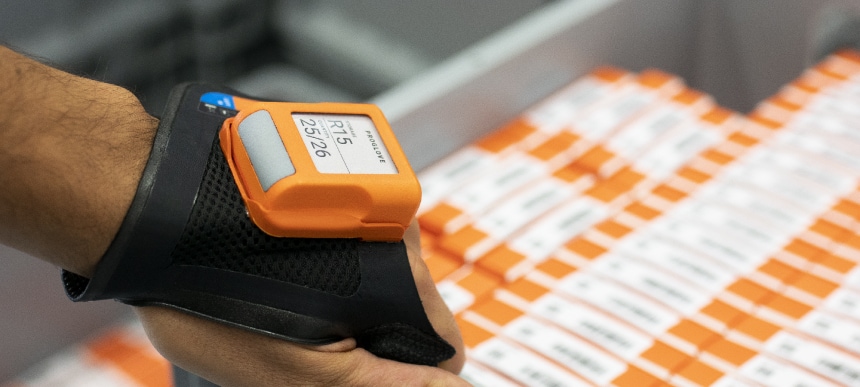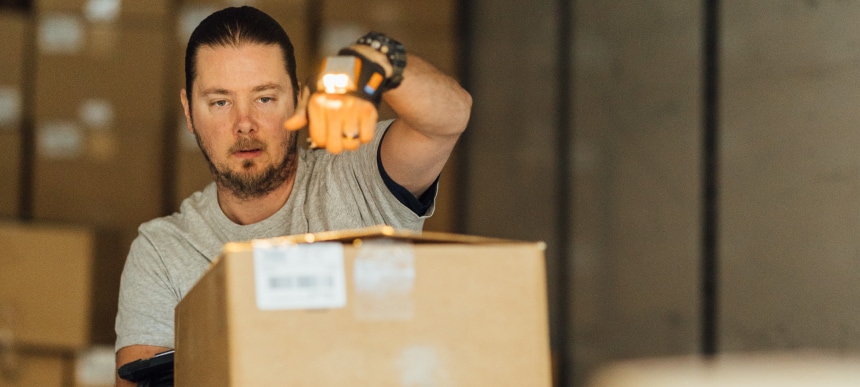A Short History of Cobots

Where we have come from, where we are now and how we will achieve human-centred warehouse productivity.
The need to allow for more productivity and profitability prompted many warehouse organizations to investigate automation and robotics. But as it turns out eliminating the human element from the warehouse is just not an option. Yet human machine collaboration provides a common middle ground that can pave the way for both. With that in mind, let’s take a brief look at the evolution of collaborative robots and the human-machine augmentation.
The first collaborative robot arm
Historically, picking, storing, and retrieving parts in a warehouse were tasks for humans to perform. It wasn’t until the 1970s that automated storage and retrieval systems appeared in warehouses. In the 1980s, demand drove inventory volume through the roof. Therefore, companies began focusing on managing their inventory in smaller batches using database-driven systems. Into the 1990s and 2000s, further technological advances led to the creation of collaborative robots, or cobots. They interact with humans in a work environment to free workers from having to perform more repetitive, complex, or hazardous tasks.
As the Association for Advancing Automation points out: “Once people saw that robotic arms could be safely used alongside human workers with no caging or physical safety equipment, collaborative robots became a highly desired commodity.” With significantly lower costs, collaborative robots, for the first time, were a profitable automation solution for small and medium sized businesses. These collaborative robots broke all the norms for industrial robots and garnered widespread attention in the industry.
Automation drives worker well-being
Today, we are living through a period of intense change in warehouse automation, driven by an upswing in e-commerce growth, new applications of cloud technology and a greater focus on worker well-being.
In warehouse environments cobots save travel time, carry heavy loads, and help with storage and retrieval. Cobots can usually be implemented very quickly to provide support, particularly in common picking scenarios such as single- and multi-order picking, batch picking, pick & pass, or pick & pack. In addition, the associated investment volume usually remains at a fraction of what organizations must spend for a conventional industrial robot. Many manufacturers set the entry price at approximately $5,000, but realistically businesses should expect a $15,000 outlay. Implementation is quick. Some preconfigured cobots allow for an implementation time of only a few days. Others may require about three months.
This all sounds great. It’s the perfect collaboration between people and robots. It can have all the impact and outcomes businesses are looking for. This can help reduce workloads for people, increase productivity, and it is a decisive step towards speed-boosting warehouse processes.
So, what do organizations need to consider when implementing cobot technology? Bulky goods and alternating formats can affect performance. Cobots may also require a restricted working area to ensure employees’ safety. Additionally, interface problems remain. After all, cobots are not fully autonomous systems. They are designed to work with humans, who have to document and confirm activities and process steps. These are all jobs which are usually done exclusively by barcode scanners. Of course, cobot manufacturers install scanners in their devices. But they provide limits for the flexibility and dexterity of the employees.
Smart Factory Lab provides more insights
The future of warehouse management undoubtedly lies in more technology and automation. Nevertheless, people are an essential and lasting success factor for warehouse operations. Cobots are a helpful intermediary, and a great way to introduce a semi-automated robotic element to the warehouse environment. It is important, however, to not view humans as a barrier to progress, but as the vessel for it.
To drive this initiative even more vigorously, humans should also be able to collaborate seamlessly with their scanner tech. This can prove the space for cobots and humans to play to their strengths. In that sense, wearable barcode scanners may be the missing link to facilitate human machine collaboration.
If you would like to find out how warehouses can benefit from the use of cobots and wearable barcode scanners, register for the upcoming edition of ProGlove’s Smart Factory Lab on September 22, 2022.


